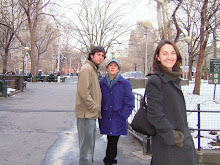In Luxor, the Nile is bordered by palms and lushious green farmlands. People are growing corn, ochre, onions, garlic and wheat.
The first day we explored some of the city and walked by the Luxor Temple, which is in the city center across the street from McDonalds. Many pharoahs contributed to it's structure over various dynasties. In comparison Ronald seems to erect his structures overnight.
Today was tombs and temples. The West bank is full of tombs of ancient kings and queens. We were driven through police checkpoints to the dry and dusty Valley of the Kings, where we explored three of the many tombs (known as the royal necropolis) cut into limestone mountains. This is where King Tut's tomb and treasures were discovered in the 1920s. We went in the deepest tomb, the longest, and then the one with the most vivid color remaining. The long tunnels descending underground are lined with etched and painted pictographs in blue, yellow, red, black from around 1500 - 1000 BC. We followed the long tunnel to the burial chamber where the tomb was kept. Pharoahs spent their lives preparing for the afterlife by building their tombs and temples for gods, which were more important investments than their own houses. Then we visited the Funerary Temple of Hatshepsut, where our guide had been part of an excavation team. It is also cut into the side of a mountain, but the original is mostly ruins after being destroyed by her stepson when he became ruler. 80 percent of the temple we saw has been restored. In 1997 58 people were killed in an attack by the Muslim Brotherhood at this site. Afterwards we saw the Colossi of Memnon, two gigantic stautes 18 meters high. And lastly, we went to the Temples of Karnak, which is claimed to be the largest religious building ever built. The entrance is lined by sphinxes but the most incredible part was the huge open-air hall, filled with massive pillars covered in hyrogliphics and paintings of gods. Karnak was built over a period of 1500 years by the pharoahs for their gods.
It is a bit hot so we spent the afternoon by the pool (yaaaa!) before our long overland journey to Dahab on the Sinai peninsula. We should arrive tomorrow.

Man, those old Pharoahs had so much foresight! They were providing for their country's future creating tourist destinations. Brilliant!
ReplyDelete